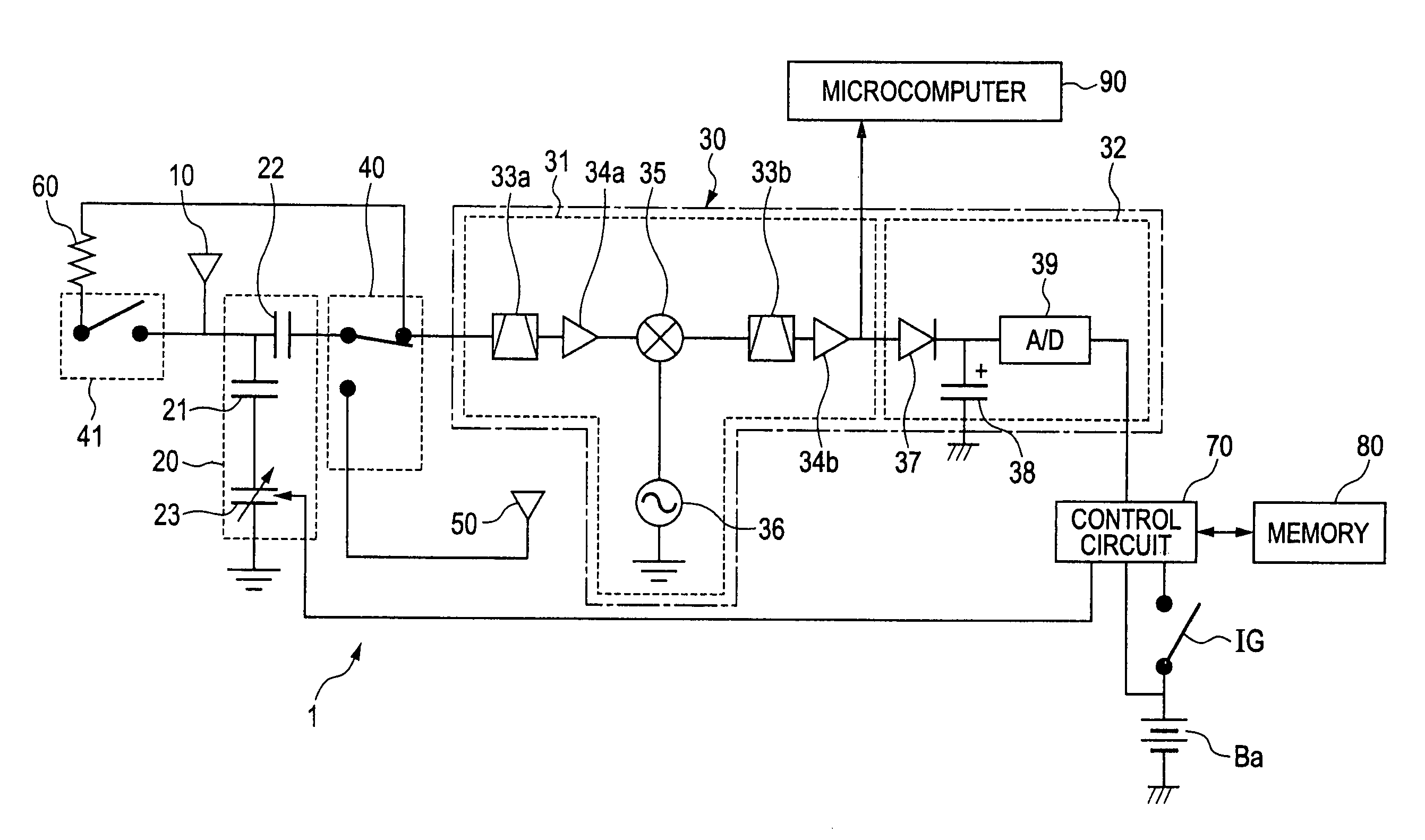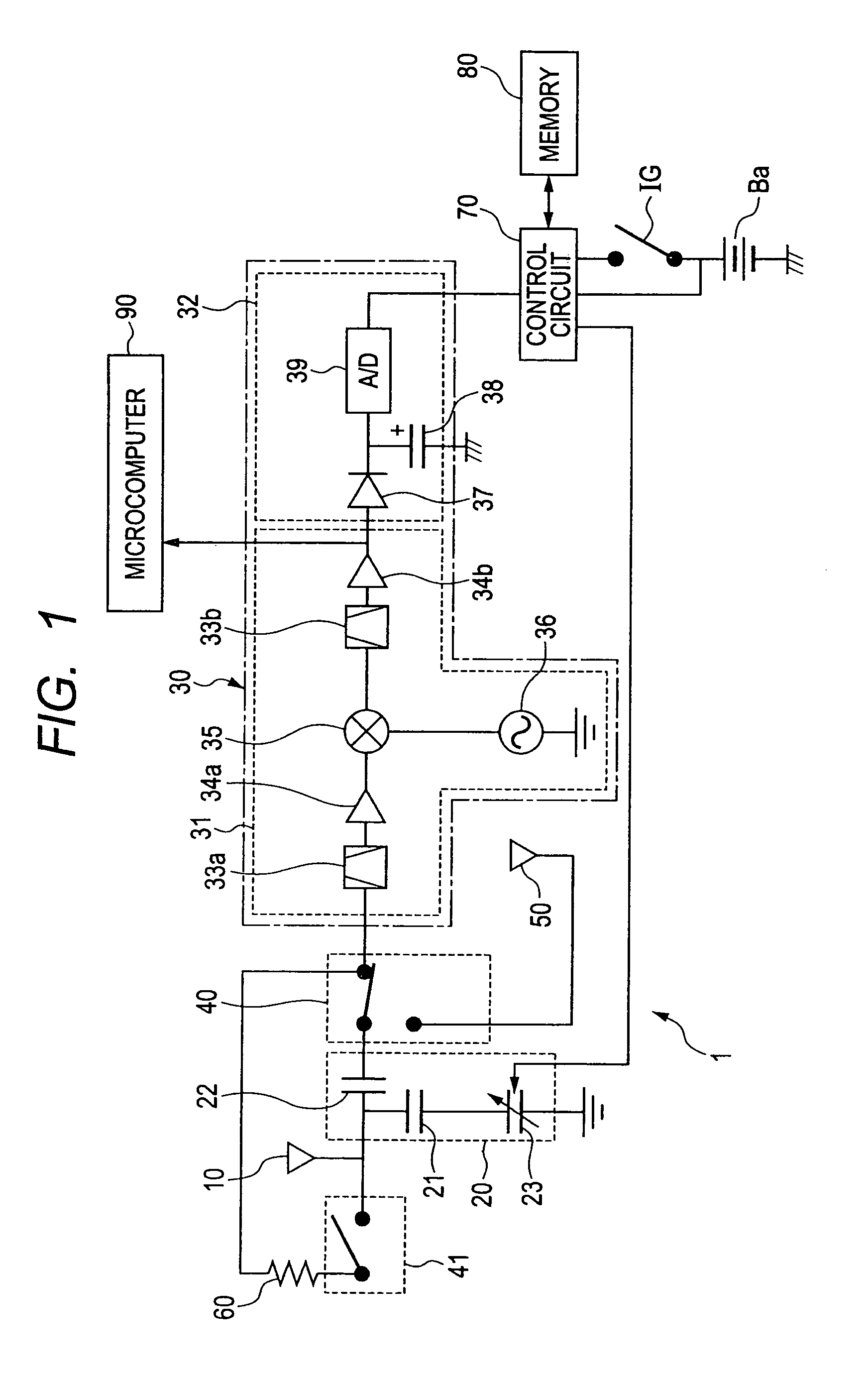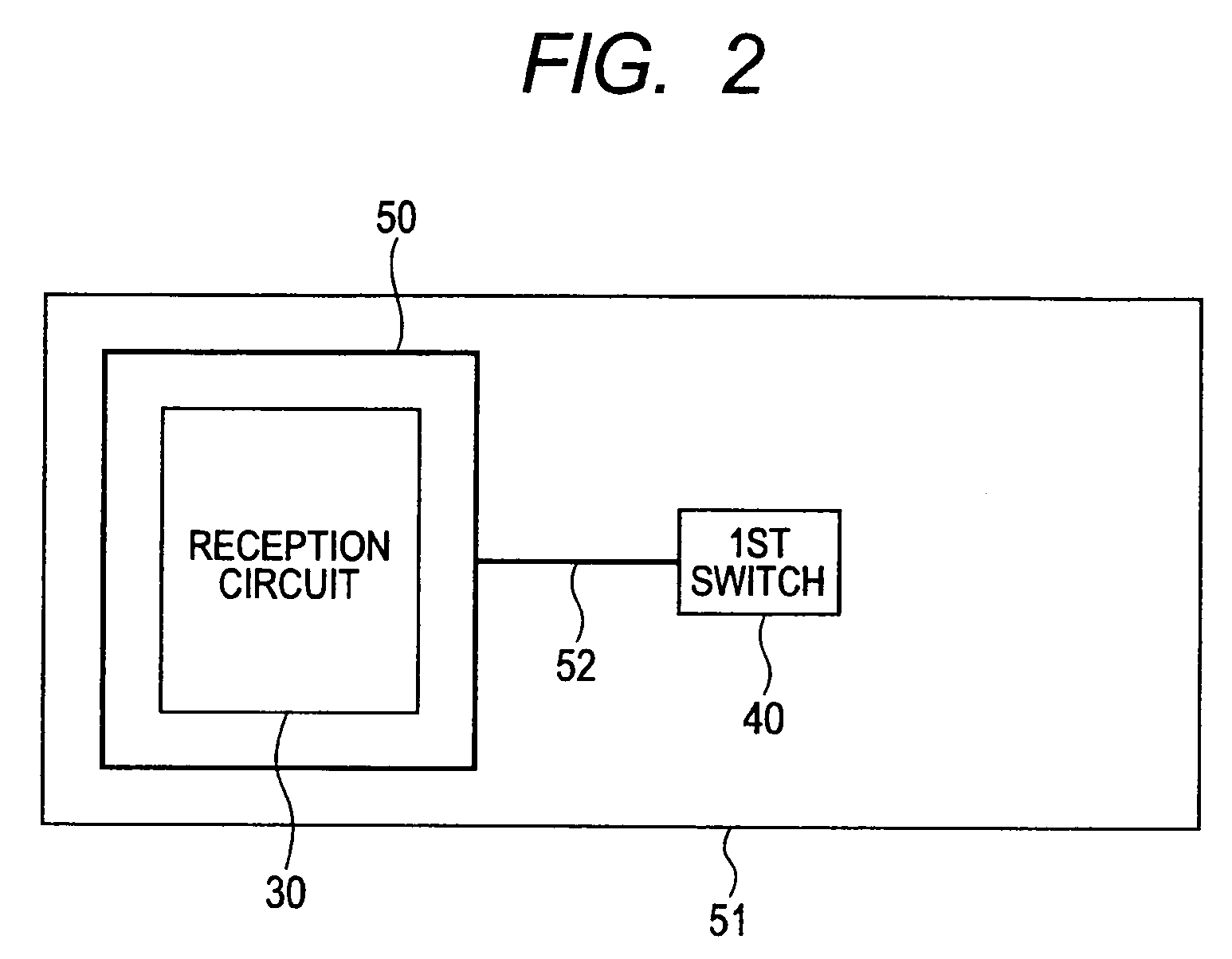Wireless communication apparatus
a technology of wireless communication and wireless communication equipment, which is applied in the field of wireless communication equipment, can solve the problems of not knowing how to bring the resonance frequency of the antenna back into agreement with the reference frequency of the predetermined signal, and achieve the effects of reducing the sensitivity of the receiver reducing the parts count and and reducing the size of the second wireless communication apparatus
- Summary
- Abstract
- Description
- Claims
- Application Information
AI Technical Summary
Benefits of technology
Problems solved by technology
Method used
Image
Examples
Embodiment Construction
[0034]FIG. 1 shows the overall configuration of a wireless communication apparatus 1 according to a preferred embodiment of the invention.
[0035]The wireless communication apparatus 1 according to the embodiment may be employed, for example, as a receiver in a Smart Entry System to receive predetermined signals transmitted by a portable transmitter (not shown) of the system. The Smart Entry System is a remote keyless entry system for a motor vehicle, which has been developed by Toyota Motor Corporation. Further, the wireless communication apparatus 1 may be arranged, for example, in the vicinity of a C-pillar of the vehicle. In addition, the wireless communication apparatus 1 is designed so as to be capable of being used in different types of motor vehicles.
[0036]As shown in FIG. 1, the wireless communication apparatus 1 includes a first antenna 10, an impedance matching circuit 20, a reception circuit 30, first and second switches 40 and 41, a second antenna 50, a resistor element 6...
PUM
 Login to View More
Login to View More Abstract
Description
Claims
Application Information
 Login to View More
Login to View More - R&D
- Intellectual Property
- Life Sciences
- Materials
- Tech Scout
- Unparalleled Data Quality
- Higher Quality Content
- 60% Fewer Hallucinations
Browse by: Latest US Patents, China's latest patents, Technical Efficacy Thesaurus, Application Domain, Technology Topic, Popular Technical Reports.
© 2025 PatSnap. All rights reserved.Legal|Privacy policy|Modern Slavery Act Transparency Statement|Sitemap|About US| Contact US: help@patsnap.com



